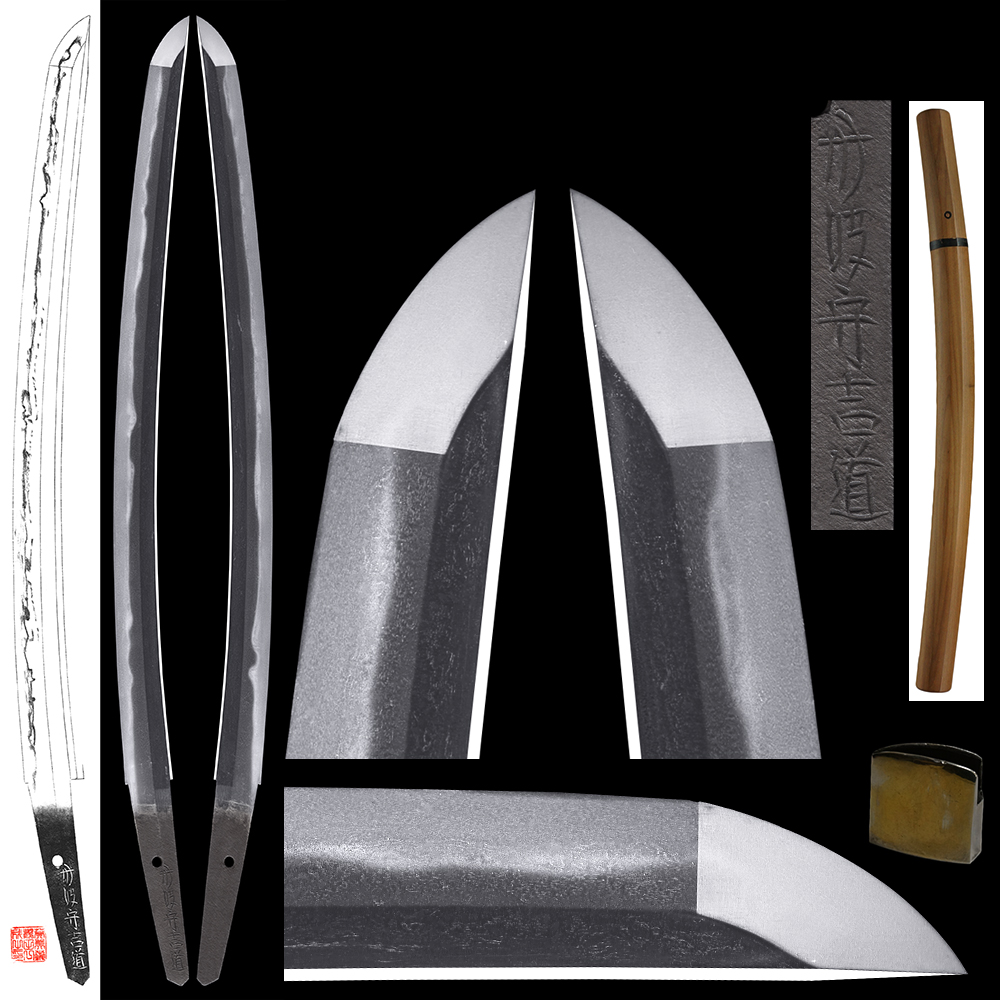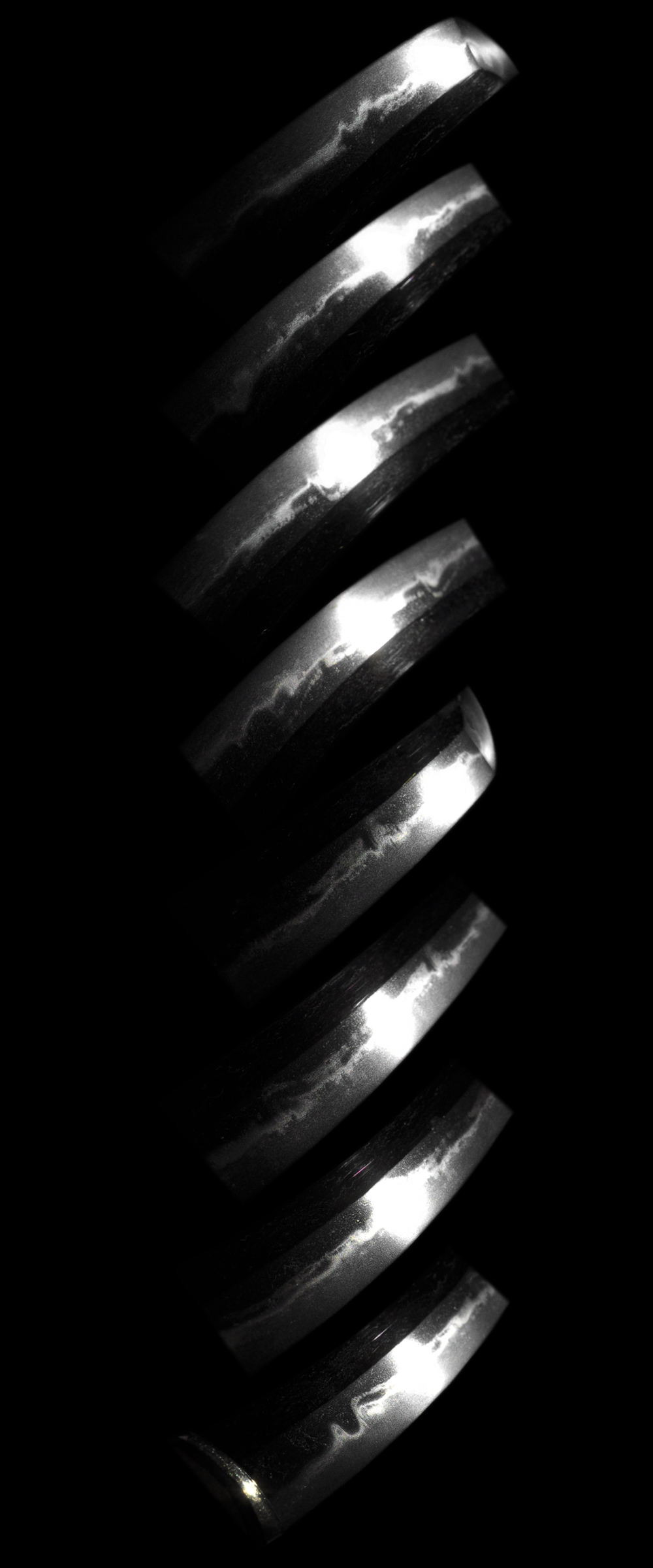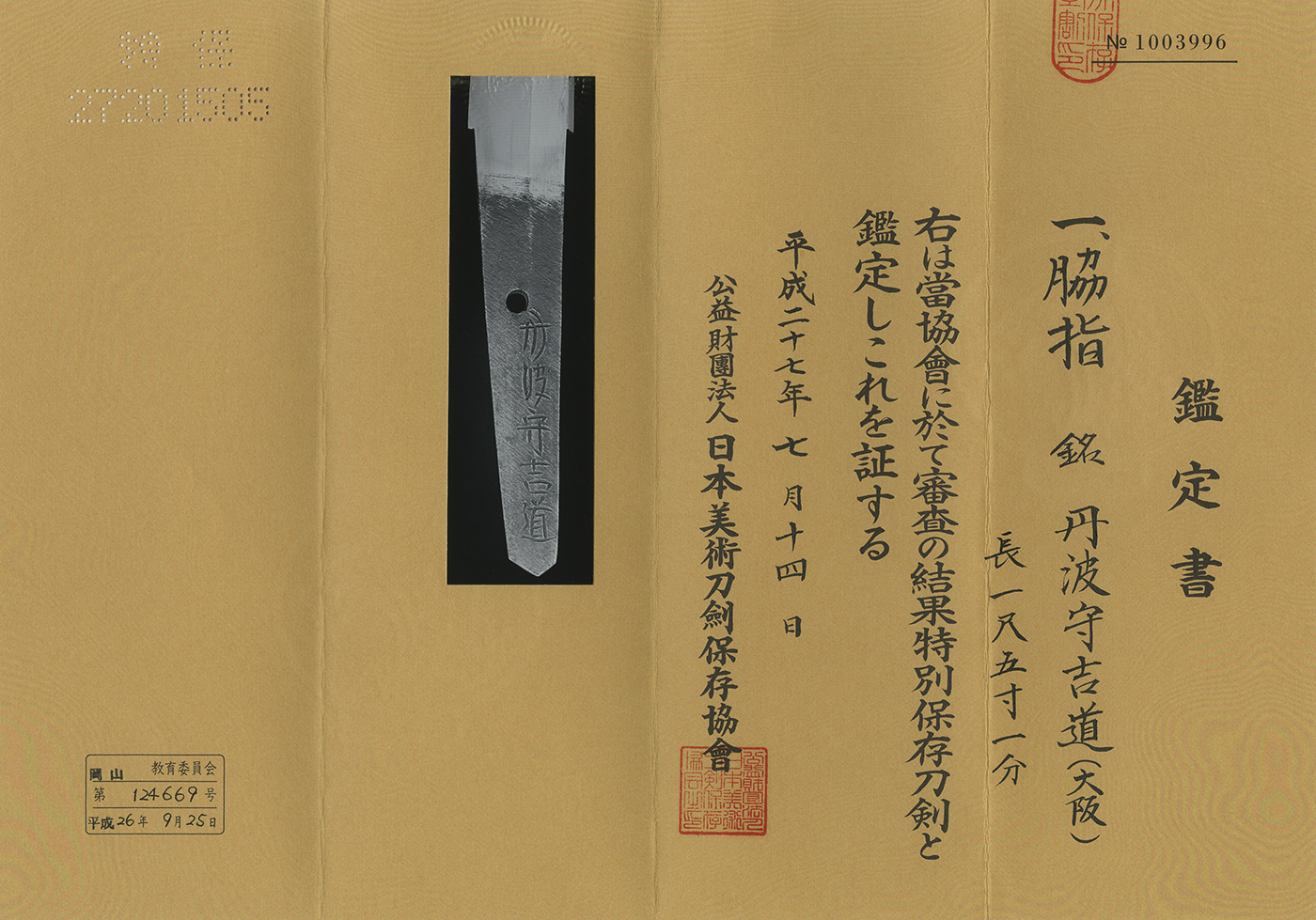Wakizashi : Tanba Kami Yoshimichi (Osaka)
2017/02/04
Wakizashi in Shirasaya with Koshirae(NBTHK Tokubetsu Hozon paper)
Signature : Tanba Kami Yoshimichi (Osaka)3rd generation
Shinto: Chujyo saku: Wazamono: Settsu province.
(We divide 4 sections for each sword as Saijyo saku, Jyojyo saku
Jyo saku and regular saku)
This blade belongs to Jyo saku ranking.
The blade was polished.
Blade length : 45.8 cm or 18.03 inches.
Sori : 1.4 cm or 0.55 inches.
Mekugi : 1
Width at the hamachi : 2.84 cm or 1.11 inches.
Width at the Kissaki : 2.03 cm or 0.79 inches.
Kasane : 0.68 cm or 0.26 inches.
Era : Edo period, around Genroku era 1688-1704.
Shape : Regular size nice shape Wakizashi.
Jitetsu : Ko-Itame Hada well grained with Jinie attach. It is beautiful Osaka Jigane.
Hamon : Nie Deki, Sudare-Ba, Boshi is round Hakikake style.
Special feature : The Mishina School in Kyoto hatched four schools; Kyo-Tamba (No) Kami,
Fushimi-Tamba (No) Kami, Osaka-Tamba (No) Kami and Yamato (No) Kami.
In our opinion, judging from the distinctive features of signature, Kyo-Tamba (No)
Kami Yoshimichi the fourth forged this katana. The First Yoshimichi was the Third son
of Kanemichi in Mino province. His eldest brother is Iga (No) Kami Kinmichi.
The family moved to Kyoto and was approved Tamba (No) Kami in 1595.
Yoshimichi the First inquired into Soshu-den and invented Sudare-ba hamon.
This tradition also appears well on this work.
Koshirae :
Tsuba : Round shape Shakudo Tsuba, cherry blossom is engraved with gold color. Late Edo period.
Fuchi : plane Shakudo, Japanese persimmon is engraved with copper color. Early Edo period.
Kashira: black horn.
Saya : Dark brown color with Ishime-Ji design.
Menuki : Shakudo, rabbit is engraved with gold color.
Kozuka : Copper, the branch is engraved. Early Edo period.
Kogatana :
NBTHK Tokubetsu Hozon paper
Aoi Art estimation paper : whole Oshigata.





